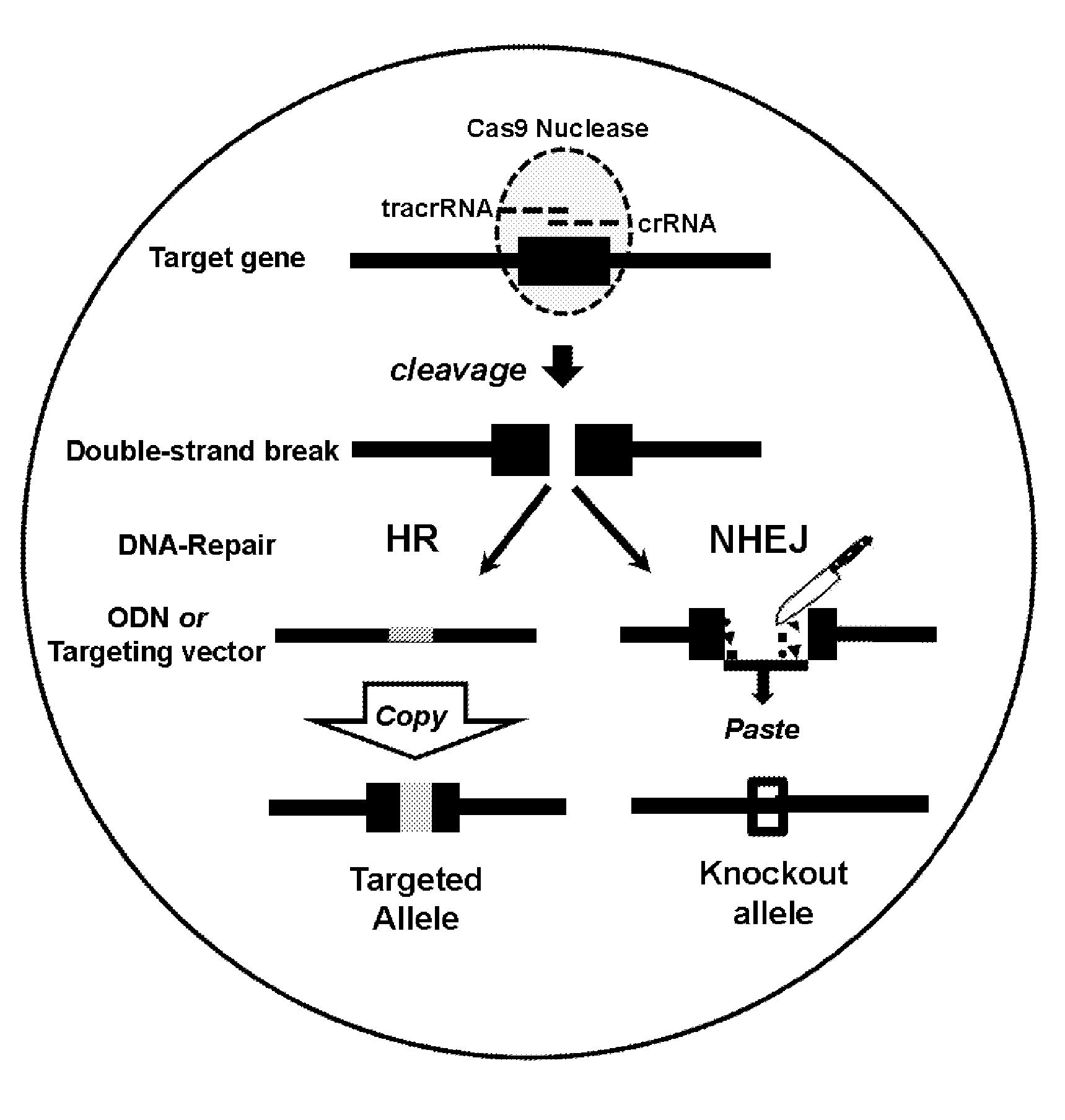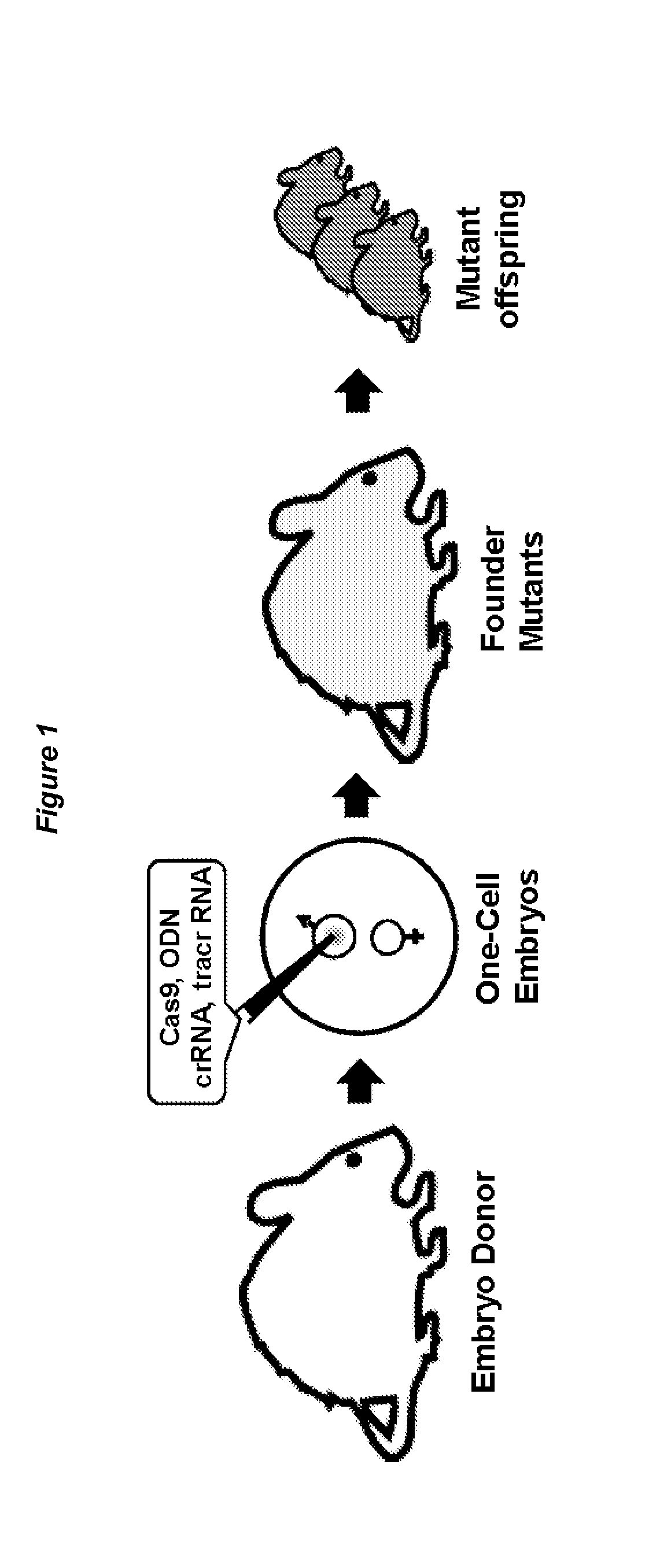Gene editing in the oocyte by cas9 nucleases
a technology of cas9 and oocyte, applied in the field of gene editing in the oocyte by cas9 nucleases, can solve the problems of inability to develop into a simple routine procedure, inefficient and time-consuming methodology, and restricted the reverse genetic approach to mice, and achieves high specificity and high frequency of homologous recombination
- Summary
- Abstract
- Description
- Claims
- Application Information
AI Technical Summary
Benefits of technology
Problems solved by technology
Method used
Image
Examples
Embodiment Construction
Generation of Knockout and Knockin Mutations in the Rab38 and Fus Genes by Cas9, and tracrRNA / crRNAs or chRNAs in Mouse One-Cell Embryos
[0130]The workflow of Crispr / Cas9-mediated, embryo based gene targeting with the microinjection of Cas9 mRNA, tracrRNA / crRNA or chimaericRNA (chRNA) and optional, of a synthetic oligodeoxynucleotide (ODN), into the paternal pronucleus of one-cell embryos isolated from donor females. Upon translation, the Cas9 nuclease protein is imported into the pronuclei and creates together with the target specific crRNA and generic tracrRNA or with the target specific chRNA, a double strand break in the target gene of the paternal and maternal genome (FIG. 1). In the paternal genome, DSBs are sealed either by homologous recombination with the mutagenic ODN or become processed in both genomes by error-prone NHEJ repair, creating knockin or knockout alleles (FIG. 2). Upon transfer of the microinjected embryos into foster females, the offspring derived is genotyped...
PUM
| Property | Measurement | Unit |
|---|---|---|
| volume | aaaaa | aaaaa |
| diameter | aaaaa | aaaaa |
| concentration | aaaaa | aaaaa |
Abstract
Description
Claims
Application Information
 Login to View More
Login to View More - R&D
- Intellectual Property
- Life Sciences
- Materials
- Tech Scout
- Unparalleled Data Quality
- Higher Quality Content
- 60% Fewer Hallucinations
Browse by: Latest US Patents, China's latest patents, Technical Efficacy Thesaurus, Application Domain, Technology Topic, Popular Technical Reports.
© 2025 PatSnap. All rights reserved.Legal|Privacy policy|Modern Slavery Act Transparency Statement|Sitemap|About US| Contact US: help@patsnap.com



